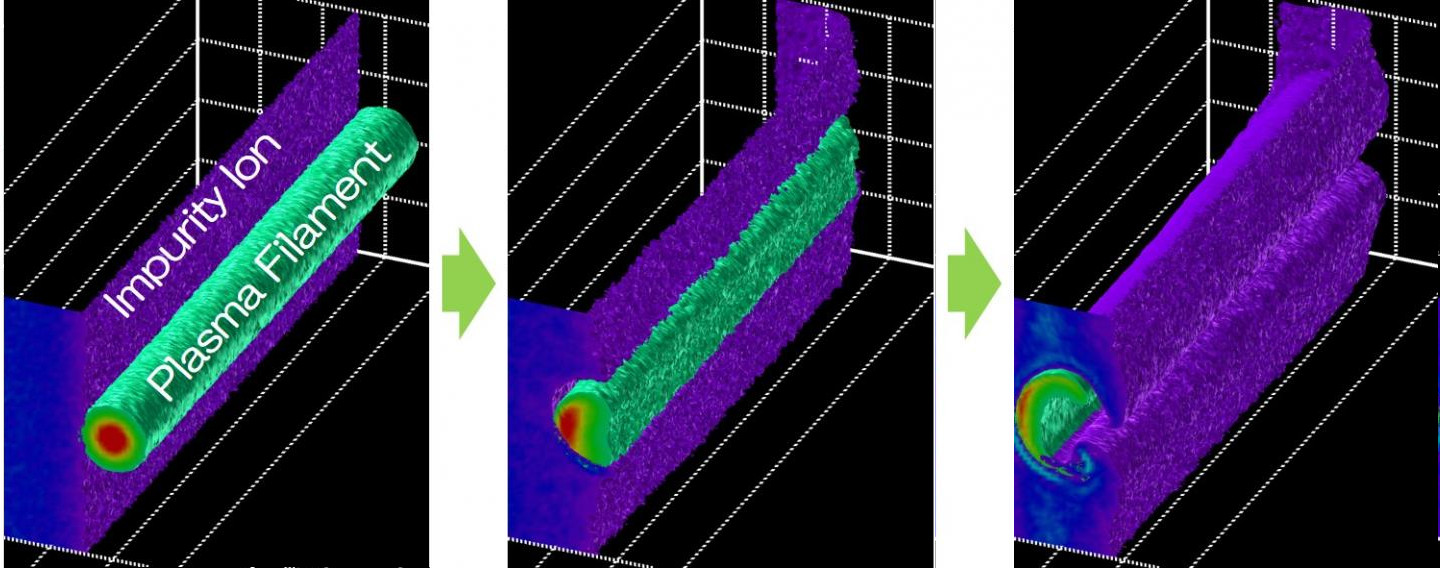
Researchers at the National Institute of Fusion Science (NIFS) succeeded for the first time in the world in conducting a micro-level simulation of a plasma blob in the “edge region” of the plasma. This simulation ran on the Plasma Simulator supercomputer, which is dedicated exclusively to plasma and fusion science use.
To produce fusion energy in a tokamak reactor, plasma is confined magnetically inside a donut-shape vessel. To sustain fusion reactions within plasma, precise conditions in the reactor are required, such as high temperature and enough density in the plasma’s core region.
Another key factor is to control the plasma in the edge region which surrounds the plasma. Here, plasma blobs can appear and move in the direction of the vessel wall. If they come into contact with the wall, plasma temperature falls and the fusion reaction decreases or can even finish.
Therefore, understanding plasma blobs is vital in the future achievement of fusion energy. In order to accurately understand the movement of a plasma blob, computational simulations at a particle level are needed. However, the amount of calculations is so enormous that it is only within the reach with supercomputers.

Dr. Hiroki Hasegawa and Dr. Seiji Ishiguro used the NIFS Plasma Simulator supercomputer to run a simulation of one billion particles. This simulation allowed to observe the mutual influence provided by the movement of particles and the electrical field, which had not been possible in methods used to date. Also, it clarified the relation between particle movements inside the plasma and the temperature distribution, which will enable to investigate its influence upon the movement of a plasma blob.
Source: EurekAlert!/AAAS
